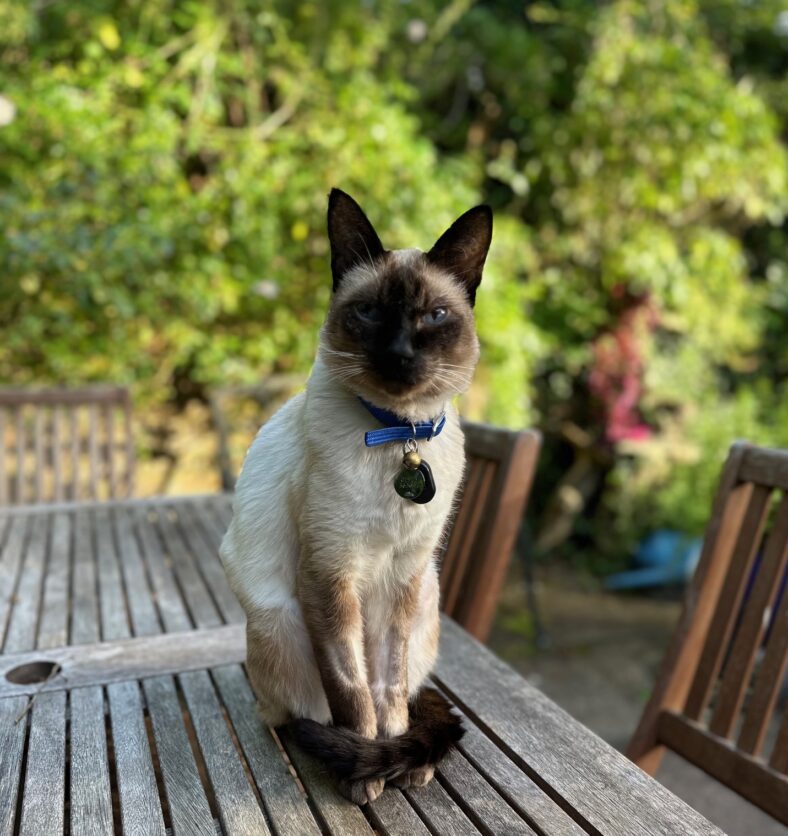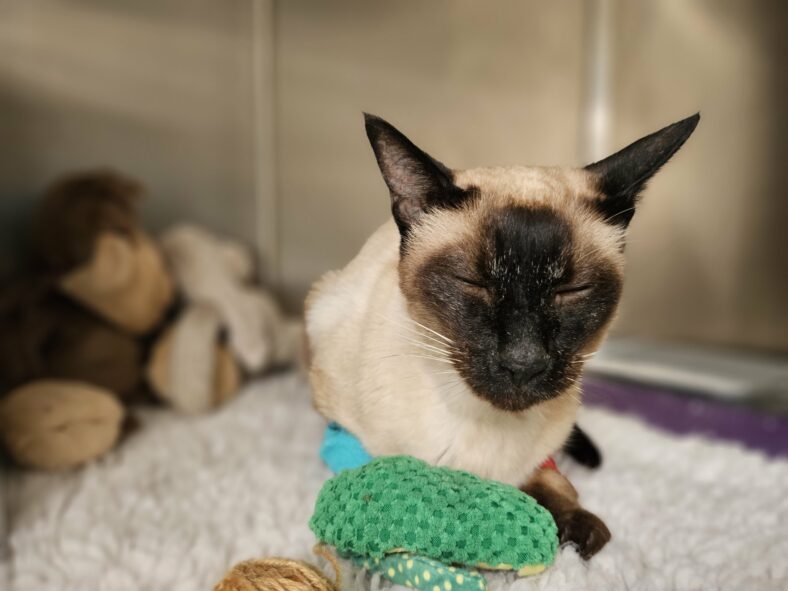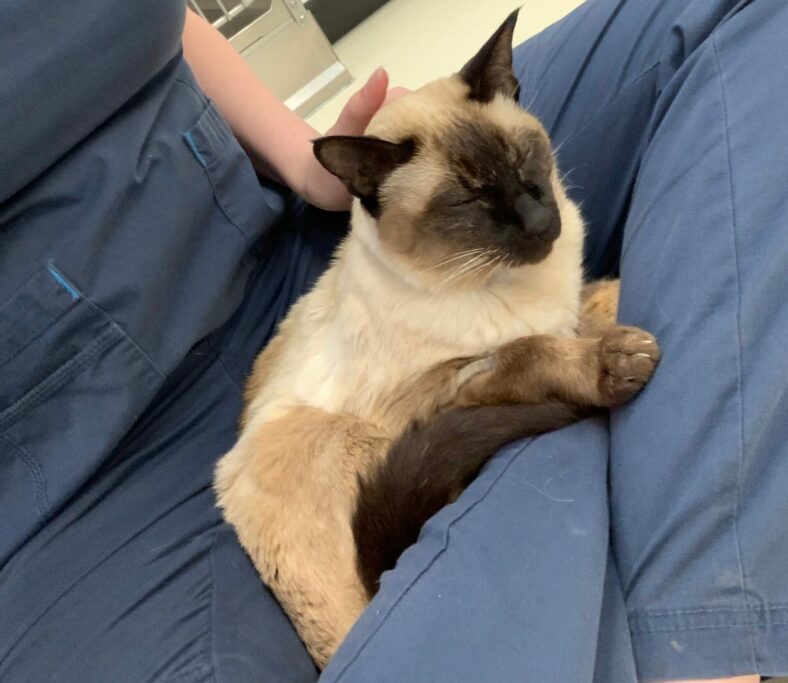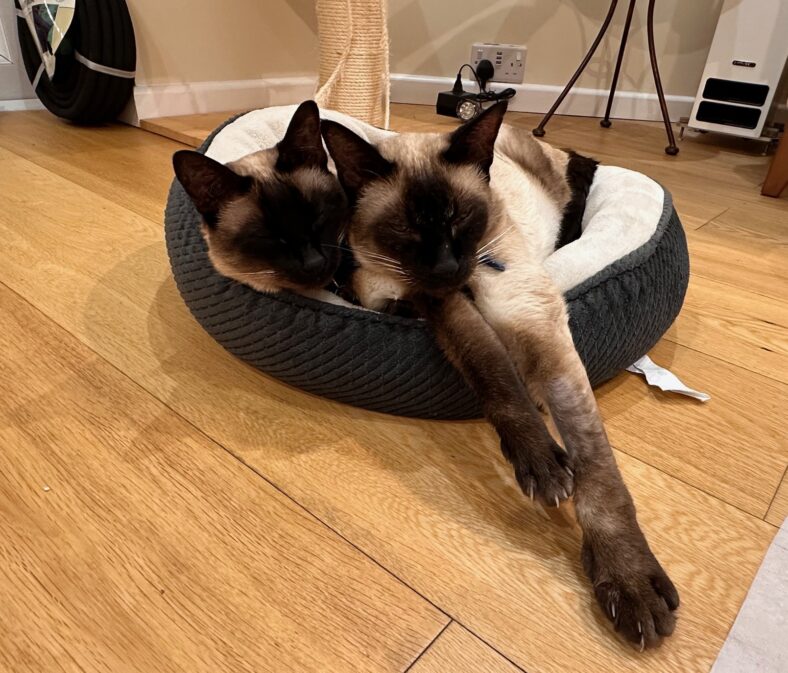Our Community
Bumi’s Story: Longstanding Bladder Atony

Did you know that a cat’s bladder is about the size of a grape when empty?
The urinary bladder is hollow and stretchy to allow it to expand as it fills with urine. In cats, it gets to about the size of an orange when full.
16-year-old Bumi has long standing bladder atony; a condition with an unknown cause where the bladder loses tone so cannot contract effectively, stopping it from emptying properly.
Longstanding bladder atony is incredibly rare in cats and if left untreated can cause progressive damage to the muscular layer in the bladder, resulting in permanent overdistension.
Treatment options include manual expression, a cystostomy tube, and medications. Bumi’s previous vet fitted him with a cystostomy tube, which is surgically placed through the abdomen to allow manual drainage of the bladder with a syringe. This tends to be a practical solution for long term conditions like Bumi’s.
With any tube placed externally to internally, there is always a risk of bacteria entering through the same tube, causing infection. Bacterial infections are often treated with antibiotics, and if treated regularly can cause multi drug resistance. This unfortunately was the case for Bumi, who contracted infections and became resistant to multiple forms of antibiotic treatment.
And this is when we met the infamous Bumi at The Ralph…
Our Internal Medicine team cultured a sterile sample of Bumi’s urine to test it against different antibiotics. This determined the most effective way forward to treat his urinary tract infection (UTI).
As new antibiotics are developed, they are categorised into generations. Medical professionals prescribe older generation antibiotics in the first instance, with the latest antibiotics being used sparingly to avoid creating a resistance problem to the newest treatment options.
Bumi required a specific type of antibiotic given the broad resistance pattern noted on his urine culture. It can only be administered via intravenous (IV) catheter and was required multiple times a day, and so Bumi stayed in with us for two weeks.

Alongside this, Bumi’s bladder atony was carefully monitored via daily ultrasound and measurement of his urine volumes. He was also given medication to stimulate the muscle receptors in his bladder. This aims to support the bladder muscle function and stop it becoming overstretched.
Bumi was fairly bright and well in himself, and picked up a fan club during his stay with us. He became known for his vocal, affectionate nature, and for being a very sweet lap cat!
Bumi’s urinary tract infection was successfully cleared (yay!), however, on top of all this, poor Bumi also has chronic kidney disease (CKD). This is likely unrelated to his bladder issues, and is in fact a common disease in older cats, but requires extra fluid support. Our Internal Medicine team has provided supportive care for Bumi and his carers, who are now able to administer subcutaneous fluids (fluid supplementation) for Bumi at home.
Since we first treated Bumi he has come in for intermittent follow ups. His carers do a wonderful job of monitoring him, and if he doesn’t seem quite himself, he’ll come back to his fan club at The Ralph for a check up on his bladder atony and CKD, and treatment if necessary.

He’s doing great, and he’s very loved. Check out these adorable pictures of Bumi with his sister, Tuki, at home…


Just lovely. Thank you for reading Bumi’s story. For regular patient stories, check out our Instagram, Facebook and LinkedIn.
Take care,
Team Ralph 🐾
